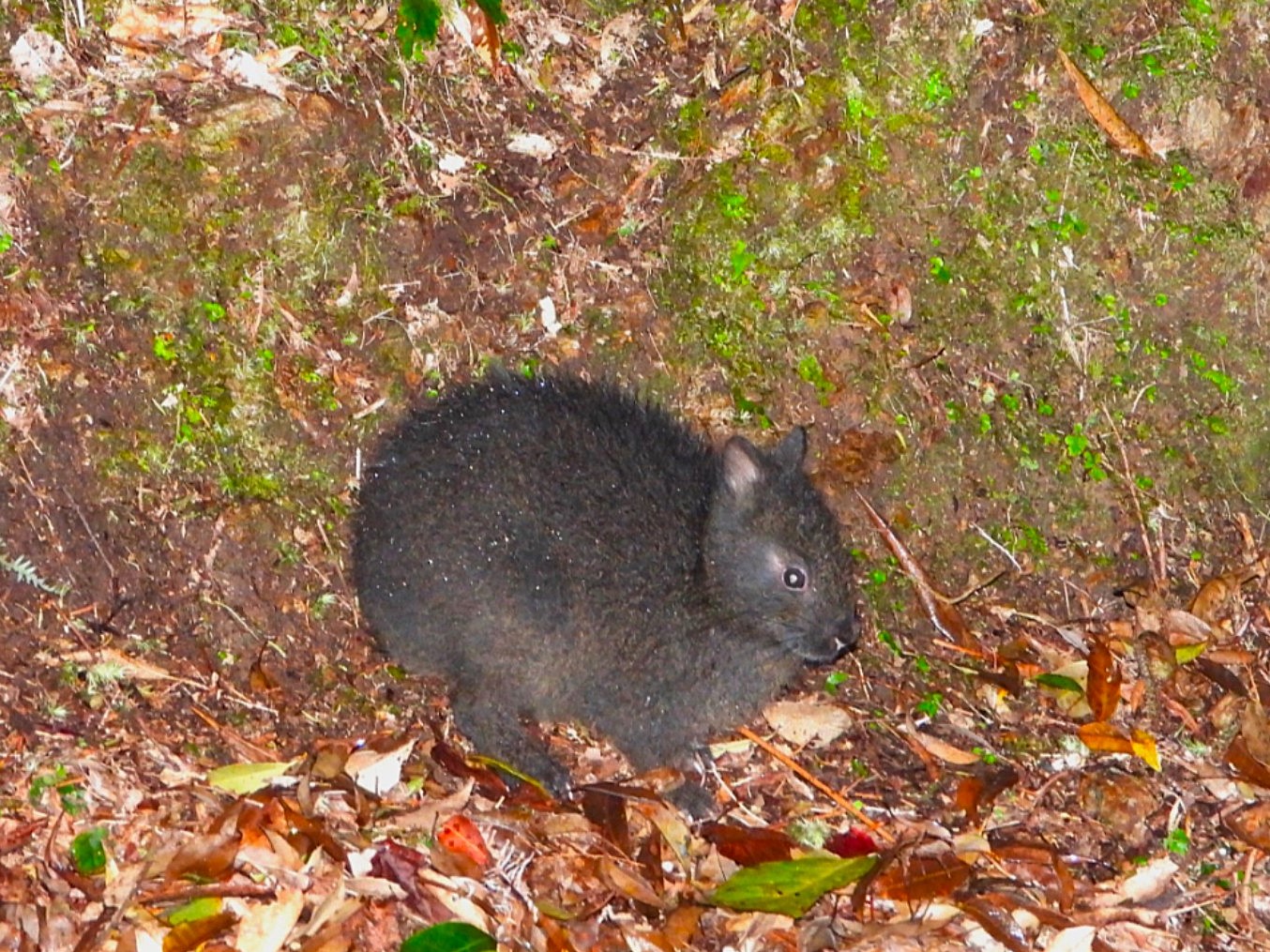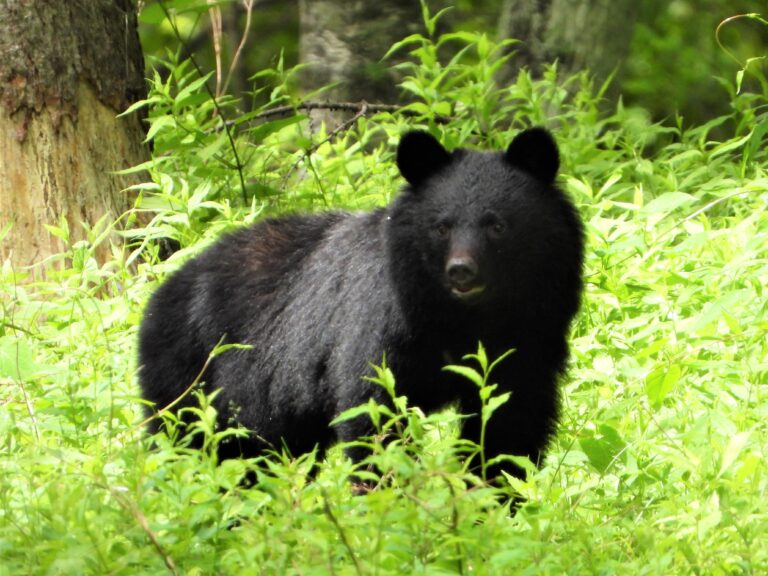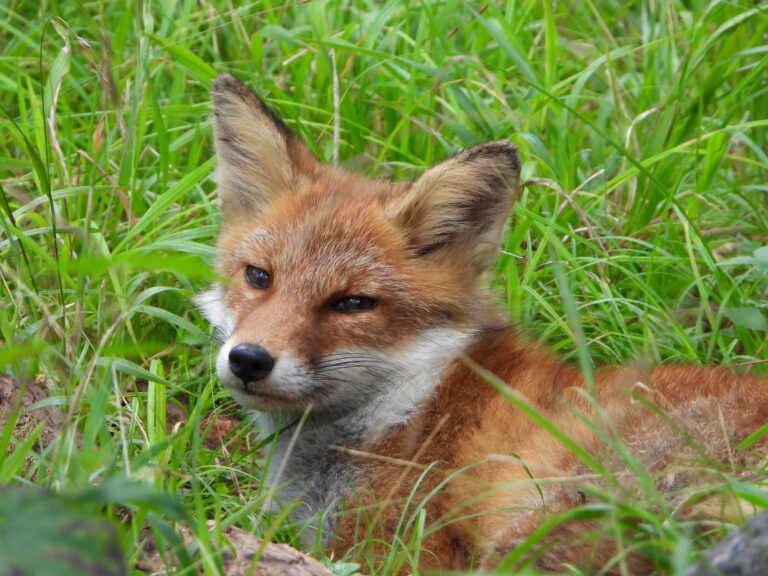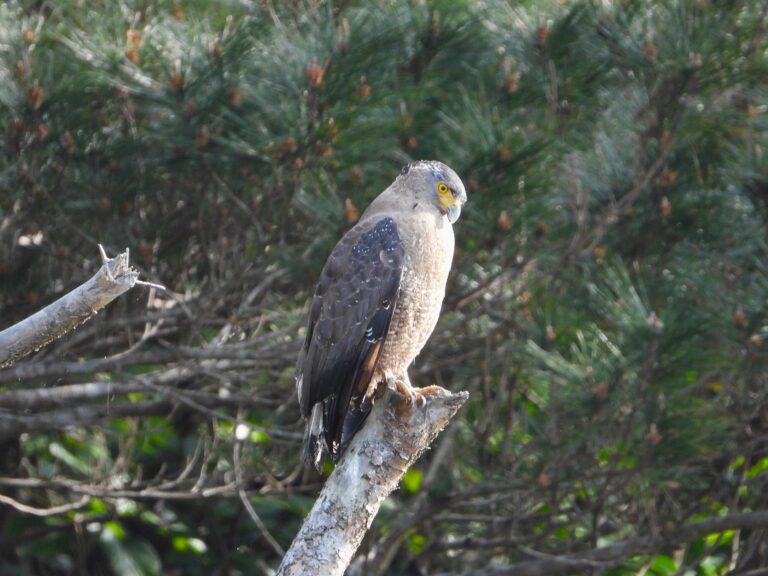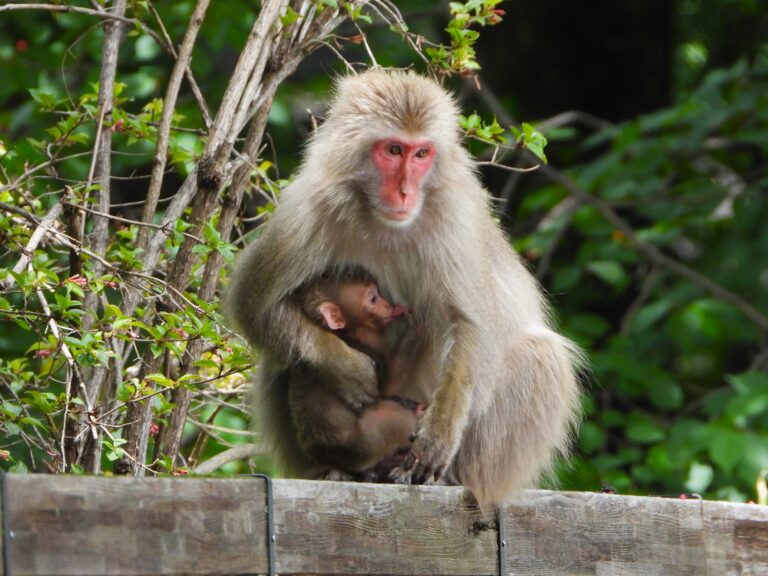Amami Rabbit (Pentalagus furnessi) – Wildlife of Japan
Introduction
The Amami rabbit is a dark, short-eared, “living fossil” found only on Amami Ōshima and Tokunoshima in Kagoshima, Japan. It is the sole species in its genus and has no close living relatives, underscoring the global conservation value of these islands.
Appearance
Stocky build; dense blackish-brown fur; very short ears (~4–5 cm); relatively small eyes; strong foreclaws adapted for digging. Adults are roughly 41–51 cm long and 2.0–2.7 kg, with rare records up to ~2.9 kg. Females average slightly larger. The molars have a distinctive “loopy” enamel pattern, reflecting its primitive lineage within Leporidae.
Habitat
Primary and secondary evergreen forests from lowlands into the hills. They dig burrows on forested slopes and often forage along streamside vegetation and forest roads at night. These islands were inscribed as a UNESCO Natural World Heritage Site in 2021 for their exceptional biodiversity, with the Amami rabbit as a flagship species.
Behavior
Strictly nocturnal; by day hidden in burrows or dense cover, and at night forages around forest roads and nearby vegetation. Communication includes hindfoot thumping and a high-pitched “pui/puyi” call used between adults and by mothers to signal young. When disturbed, individuals dash into thick undergrowth.
Diet
Primarily leaves, shoots, twigs, and bark of woody and herbaceous plants; acorns are also taken. Dental microwear texture analysis suggests a browsing diet with relatively little seasonal change compared to omnivorous rodents living on the same islands.
Reproduction
Breeding shows two peaks: mainly November–December, with an additional spring peak in May. Litters are usually one (rarely two). The mother places the furred neonate in a leaf-lined nursery burrow, visits on a tight schedule to nurse, and then camouflages the entrance with soil and vegetation before leaving.
Conservation
IUCN status: Endangered. Historic drivers of decline include habitat loss and predation by invasive small Indian mongooses, feral cats, and dogs. A major breakthrough came on Amami Ōshima in September 2024, when Japan’s Ministry of the Environment declared the mongoose eradicated after years of control—good news for rabbits and other endemics. Ongoing concerns include roadkill on forest roads and predation by feral cats and dogs, so slow night-driving and strict pet control are vital. The species is a Special National Natural Monument (Japan) and subject to an official protection and recovery plan.
Author’s Impression
I dream of a careful night drive on Amami Ōshima—windows down, listening for that faint “puiii” and watching for a dark shape along the verge. If I’m lucky enough to go, I’ll book a reputable local guide, use only dim/red light briefly, keep distance, and prioritize safe, slow driving to avoid stressing wildlife or causing roadkill. This is such a fascinating species that it would be worth traveling to these islands just to see it.
Ethical wildlife-watching tips
Observe from a distance, never feed or pursue. Use dim/red light sparingly; avoid flash. Drive slowly on forest roads at night. Follow local guidance inside the World Natural Heritage area.

